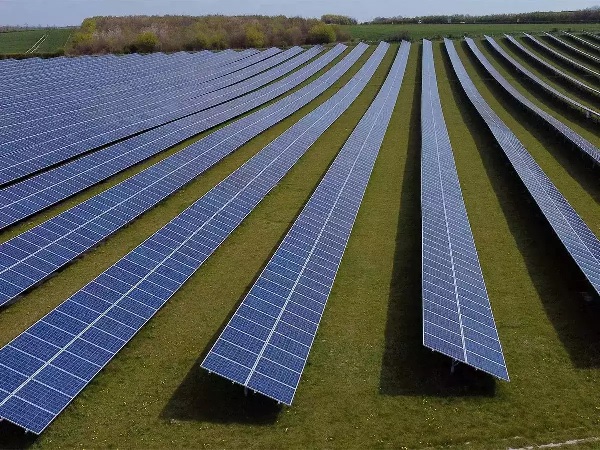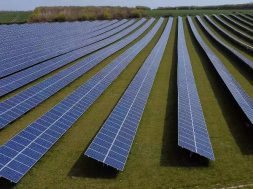
In Short :
-
India’s solar capacity increased from 1.60 GW in 2013 to 63.15 GW in 2022
-
51 solar parks with a total capacity of 37.74 GW sanctioned across India by 2023
-
PM Modi predicts significant growth in India’s solar energy sector
In Detail : The period from 2013 to 2022 witnessed significant growth in India’s solar energy capacity, with production surging from 1.60 GW in 2013 to 63.15 GW in 2022.
During his address at the India Today Conclave, Prime Minister Narendra Modi outlined ambitious plans for the next five years, particularly in solar energy. He expressed confidence that India’s solar energy capacity would reach unprecedented levels in the coming years. But is that assertion grounded in reality?
India Today’s Data Intelligence Unit analysed the data and found that between 2013 and 2022, there was significant growth in India’s solar energy capacity. Starting from 1.60 GW in 2013, the country’s maximum net generating capacity steadily rose, reaching 63.15 GW by 2022.
Globally, India has emerged as a significant player in renewable energy, ranking fourth in total renewable power capacity additions and fifth in solar power capacity. From 2014 to 2024, India also saw an expansion in its installed capacity for energy generation, increasing from 3.74 GW in FY 2014-15 to 74.31 GW in FY 2023-24 (till January). India has a projected target of achieving 500 GW of installed capacity from non-fossil fuel sources by 2030.
A total of 51 solar parks were sanctioned across various states in India, with a combined capacity of 37.74 GW by 2023. Among these, Gujarat emerged at the forefront with seven sanctioned parks, amassing 12.15 GW in sanctioned capacity, notwithstanding its high allocation. Yet, the commissioned projects amounted to only 0.9 GW.
“Sanctioned capacity” denotes the maximum power generation capacity officially endorsed or authorised for a specific project or initiative, while “projects commissioned” refers to the operational portion of the sanctioned capacity successfully executed and currently functioning.
Rajasthan followed closely with nine parks sanctioned for 8.276 GW, which managed to commission projects totalling 3.065 GW. Andhra Pradesh has five parks with a total capacity of 4.2 GW, and projects amounting to 3.05 GW, while Madhya Pradesh has eight parks sanctioned for 4.18 GW. States like Jharkhand, Maharashtra, Odisha, Kerala, Chhattisgarh, and Mizoram, however, did not commission any projects despite having sanctioned capacities.
TOP STATES
Rajasthan led the rankings with an installed capacity of 19.5 GW, followed by Gujarat with 10.7 GW. Karnataka secured the third spot with 9.5 GW, while Tamil Nadu and Maharashtra held significant solar power capacities with 7.5 GW and 5.7 GW, respectively. Telangana, Andhra Pradesh, Madhya Pradesh, Uttar Pradesh, and Haryana also made notable contributions to the solar power sector.
States leading in installed capacity, such as Rajasthan, were also among those receiving significant funding for the development of the solar energy sector in FY 2022-23. For instance, Rajasthan received Rs 258.84 crore for this purpose.
This trend was observed across several states, including Gujarat, Maharashtra, Karnataka, Madhya Pradesh, Uttar Pradesh, Haryana, and Andhra Pradesh, all of which ranked among the top 10 in both installed capacity and funds allocation. Notably, states like Kerala and Ladakh, despite receiving higher funding, did not correspondingly exhibit high capacity.











